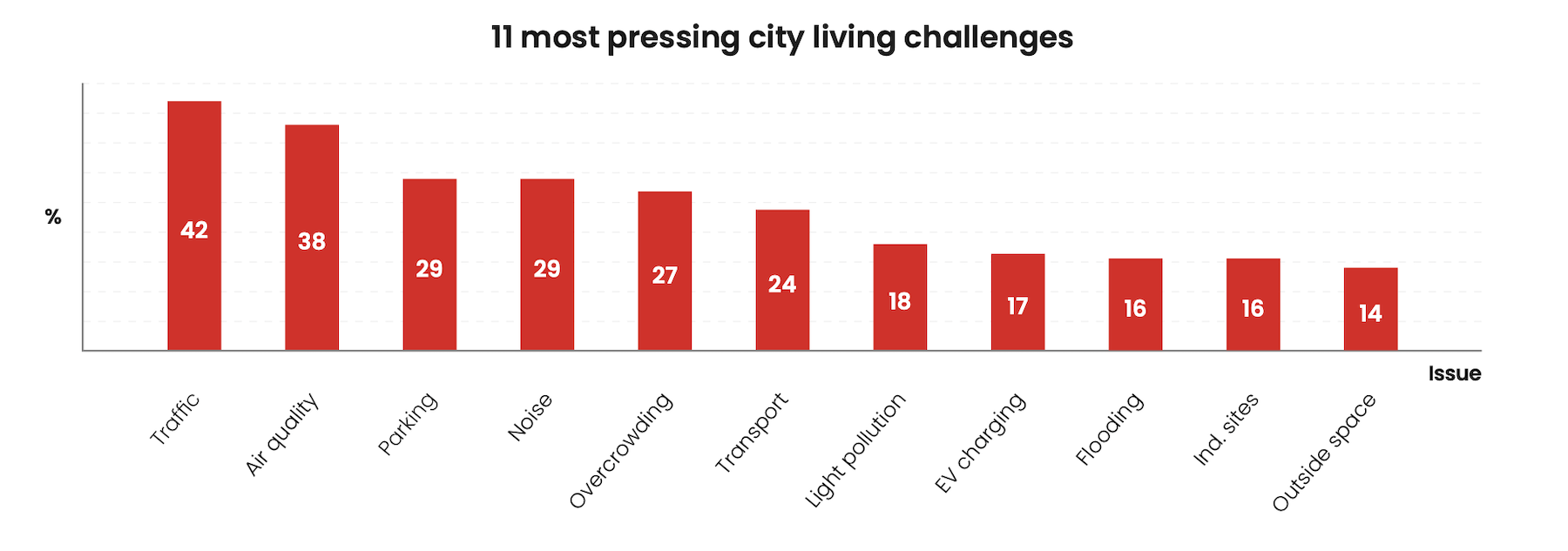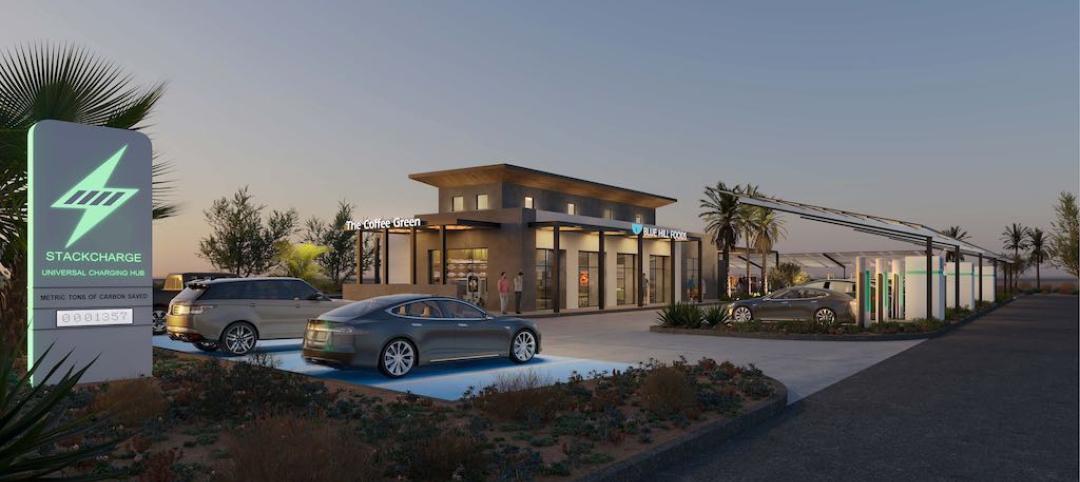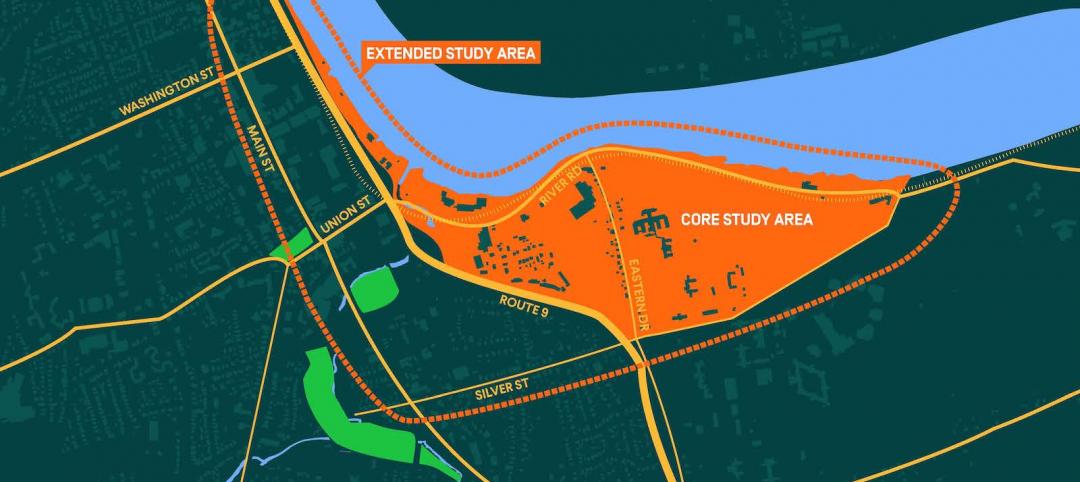One-quarter of city dwellers draws a line that connects the economic and environmental challenges of urban living with negative impacts on their mental health and well-being, and nearly as many urbanites say the challenges can affect them physically.
Those are some of the key findings in an “Architects of Change” report, based on an 11-question survey of 4,024 city dwellers in the U.S., United Kingdom, Germany, and Italy, commissioned by Chaos, a global leader in 3D visualization tools, and conducted on January 3-8, 2024, by Censuswide.
The report combines a rather bleak portrayal of city living with analysis—by John M. Cays, Associate Dean for Academic Affairs at New Jersey Institute of Technology’s Hillier College of Architecture and Design—that offers suggestions about how architects and designers might visualize the city of the future in ways that make urban living more palatable for residents, especially those age 35 to 44 who are most likely to purchase a house and become parents.
Climate change is adding stress to urban living
 While the respondents were pretty evenly divided among age, income, and geographic cohorts, the “common” respondent lives in a three-person household. Ten percent lives alone, and 13 percent lives in a household of five or more people. The respondents ranged from 16 to 55-plus years old, with the greatest portion falling within 35 and 44. Fifty-six percent of respondents—and 70 percent in the U.S. and Italy—owns homes outright.
While the respondents were pretty evenly divided among age, income, and geographic cohorts, the “common” respondent lives in a three-person household. Ten percent lives alone, and 13 percent lives in a household of five or more people. The respondents ranged from 16 to 55-plus years old, with the greatest portion falling within 35 and 44. Fifty-six percent of respondents—and 70 percent in the U.S. and Italy—owns homes outright.
Nearly three-quarters, 73 percent, of the survey’s respondents have lived in cities for at least five years. But that number drops to 28 percent when so-called nonnatives—people who were born in cities and have lived there all their lives—are excluded.
(The report links mobility and income. Among respondents with incomes of more than $45,501, the number of nonnatives who have lived in cities five years or fewer exceeds those who have lived in cities five years or more.)
The urban living experience can be stressful, especially when now when housing prices and rents are escalating. Sixty-three percent of respondents connect how much they pay for housing with declines in their quality of life. Nearly half, 47 percent, were considering moving to less-expensive housing markets. And 73 percent worry about the rising cost of energy.
City dwellers must put up with all kinds of annoyances, too. Forty-two percent of respondents cited traffic congestion, followed by access to parking (29 percent) and noise pollution (29 percent). The good news for AEC firms is that these complaints leave open the door for building improvements in soundproofing and in-home air filtration.

Cities are also at the doorstep of climate change, and their residents are noticing. Fifty-seven percent of respondents said they feel temperate extremes that affect their mental health and well-being. Another 21 percent cited weather extremes as a reason for moving. Three-fifths of respondents said they are willing to pay for solar panels that would lessen the impact of environmental change. And more than one-quarter of those survey sees climate change as a driver for storm- and floodproofing their homes.
(One finding that’s hard to explain: households with six or more people expressed the least concern for environmental design changes.)
Does urban living reinforce enduring home qualities?
More than three-fifths of those polled say that urban living places more economic pressure on them. Not surprisingly, lower-income city dwellers are feeling that pressure more acutely; however, energy costs are palpable as well for higher-income residents who are likely to be living in larger homes that consume more energy.
Cays, the Hillier College dean, observed the rise in micro housing units as one solution to housing inflation. And while the enduring qualities of a home—as a place of refuge, gathering, and repose—will remain constant, Cays can also envision tomorrow’s homes as “simply bathing and sleeping hubs,” with additional needs, like cooking and recreation, more external communal services.
On the climate change front, Cays’ analysis was more general and obvious. He said that any solutions must reflect geographic diversity, and that understanding building performance can make cities more adaptable to change.
Millennials are vulnerable to urban living pressures
 The report presents Millennials as the lifeblood of cities, but also as the age group most vulnerable to the pressures of urban living. Their biggest reason for leaving cities is rising housing costs. And if cities can’t hold onto their Millennial residents and attract new ones, those cities are likely to close schools, lose small businesses and entertainment venues, and see declines in the arts, healthcare, and open spaces.
The report presents Millennials as the lifeblood of cities, but also as the age group most vulnerable to the pressures of urban living. Their biggest reason for leaving cities is rising housing costs. And if cities can’t hold onto their Millennial residents and attract new ones, those cities are likely to close schools, lose small businesses and entertainment venues, and see declines in the arts, healthcare, and open spaces.
Cays said that architects can visualize urban design that supports families, provides schools and open spaces, and “incentivizes the protection and promotion of communities.”
Related Stories
Augmented Reality | Jan 27, 2023
Enhancing our M.O.O.D. through augmented reality therapy rooms
Perkins Eastman’s M.O.O.D. Space aims to make mental healthcare more accessible—and mental health more achievable.
Urban Planning | Jan 18, 2023
David Adjaye unveils master plan for Cleveland’s Cuyahoga Riverfront
Real estate developer Bedrock and the city of Cleveland recently unveiled a comprehensive Cuyahoga Riverfront master plan that will transform the riverfront. The 15-to-20-year vision will redevelop Tower City Center, and prioritize accessibility, equity, sustainability, and resilience.
40 Under 40 | Oct 19, 2022
Meet the 40 Under 40 class of 2022
Each year, the editors of Building Design+Construction honor 40 architects engineers, contractors, and real estate developers as BD+C 40 Under 40 awards winners. These AEC professionals are recognized for their career achievements, passion for the AEC profession, involvement with AEC industry organizations, and service to their communities.
Urban Planning | Jul 28, 2022
A former military base becomes a substation with public amenities
On the site of a former military base in the Hunters Point neighborhood of San Francisco, a new three-story substation will house critical electrical infrastructure to replace an existing substation across the street.
Urban Planning | Jul 19, 2022
The EV charger station market is appealing to investors and developers, large and small
The latest entry, The StackCharge, is designed to make recharging time seem shorter.
Sustainable Development | Jul 14, 2022
Designing for climate change and inclusion, with CBT Architects' Kishore Varanasi and Devanshi Purohit
Climate change is having a dramatic impact on urban design, in terms of planning, materials, occupant use, location, and the long-term effect of buildings on the environment. Joining BD+C's John Caulfield to discuss this topic are two experts from the Boston-based CBT Architects: Kishore Varanasi, a Principal and director of urban design; and Devanshi Purohit, an Associate Principal.
Sponsored | Healthcare Facilities | May 3, 2022
Planning for hospital campus access that works for people
This course defines the elements of hospital campus access that are essential to promoting the efficient, stress-free movement of patients, staff, family, and visitors. Campus access elements include signage and wayfinding, parking facilities, transportation demand management, shuttle buses, curb access, valet parking management, roadways, and pedestrian walkways.
Urban Planning | Apr 5, 2022
The art of master planning, with Mike Aziz of Cooper Robertson
Mike Aziz, AIA, LEED AP, Partner and Director of Urban Design with Cooper Robertson, discusses his firm's design for the redevelopment of a Connecticut town's riverfront.
Multifamily Housing | Mar 29, 2022
Here’s why the U.S. needs more ‘TOD’ housing
Transit-oriented developments help address the housing affordability issue that many cities and suburbs are facing.
Urban Planning | Feb 14, 2022
5 steps to remake suburbs into green communities where people want to live, work, and play
Stantec's John Bachmann offers proven tactic for retrofitting communities for success in the post-COVID era.

















